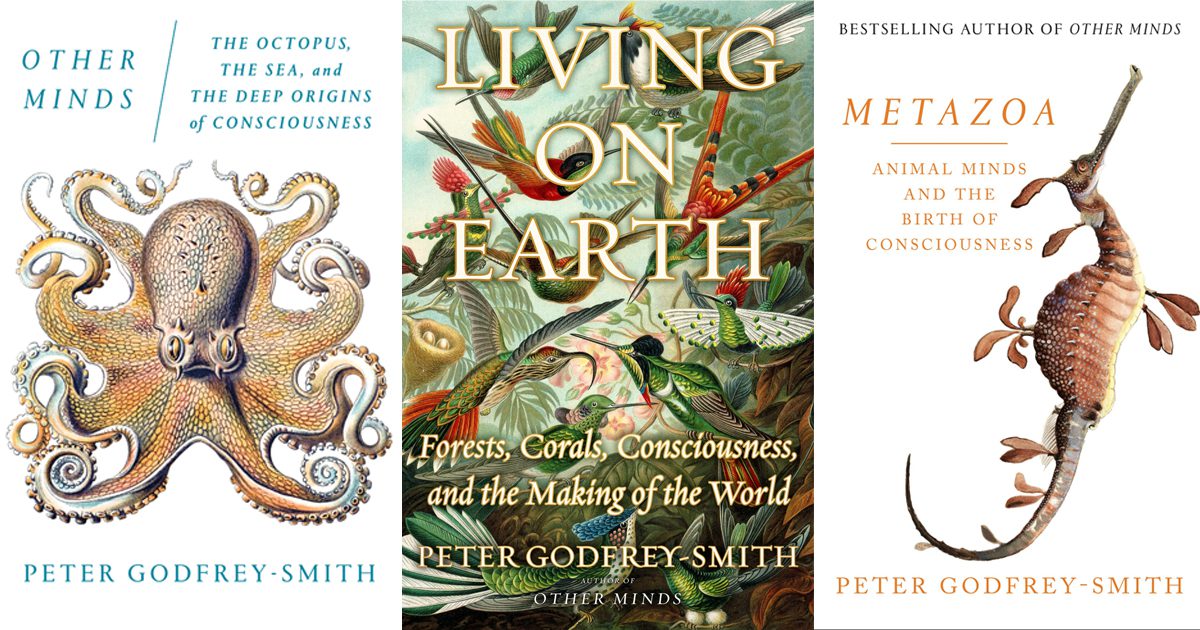
Aug 29, 2024 Sentience and the Moral Status of Animals: A Review of Peter Godfrey-Smith’s Trilogy
Peter Singer is an Australian philosopher widely regarded as the “father” of the modern “Animal Rights” movement. However, as a Utilitarian, Singer does not agree with rights-based philosophical arguments. Like Jeremy Bentham, who argued that the criterion placing animals on the moral scale was their ability to experience pain and suffering, Singer holds that sentience is the morally significant criterion that qualifies animals as moral patients whose interests humans must consider. However, Singer does not develop a detailed argument on what sentience means in his very influential book, Animal Liberation. As indicated by articles in the journal Animal Sentience, published by WellBeing International, it is no simple matter to develop a clear definition of sentience and then apply that definition to identify which animals are or might be sentient.
Godfrey-Smith, another Australian philosopher, has indicated that Singer’s Animal Liberation was a major influence on him and his thinking. His recent books – a very well-regarded trilogy consisting of the best-seller Other Minds (2016), Metazoa (2020) and, most recently, Living on Earth: Life, Consciousness and the Making of the Natural World (available in September 2024 from Amazon) develop arguments defining the evolution of consciousness and sentience. The first book focuses on octopus biology, behavior and consciousness. The second focuses on how conscious experience developed as animal species evolved from single-celled creatures into a wide variety of multi-cellular forms today. Commonly, mammals and birds are widely regarded as sentient. Still, Godfrey-Smith believes a much more comprehensive selection of species, including the cephalopods and many other invertebrates, are also conscious and sentient.
For a condensed version of his discussion of consciousness and sentience, the reader is referred to an open-access e-print of a chapter by Godfrey-Smith in The Routledge Handbook of Philosophy Animal Minds (2017). Godfrey-Smith notes that the term “consciousness” in a broad sense is now widely used. In this sense, there is “something it is like” to be an animal. However, he suggests that many animals have a rich form of experience rather than simply being awash with feelings. He argues for recognizing a broad category of sentience (being awash with feelings), but that consciousness should refer to a narrower category of experience.
Godfrey-Smith begins by asking which biological traits are relevant to the evolution of conscious experience – in other words, what distinguishes “being something it is like” from “not being something it is like” to be that animal? He notes that integrating sensory information leading to controlled action by an animal is pivotal to consciousness. This idea is present in several publications. He refers to Klein and Barron’s argument (2016) that consciousness is present in insects based on the way they handle sensory information and determine behavior.
Godfrey-Smith then explores the relations between evaluation and feelings – marking “a distinction between good and bad, welcome and unwelcome.” He notes that bacteria and plants are “valuers” of sensations and feelings broadly, but “there might be some landmark introducing a kind of evaluative processing with plausible links to consciousness.” For example, “nociception” – detecting damage and producing an immediate response such as withdrawal – is common in animals, but pain, “as a feeling, with its distinct aversive quality, is thought to involve something extra.” Pain theories classically describe pain locations and varieties of damage and address the unpleasantness of the stimulus (that is, how bad it feels). Godfrey-Smith concludes that there may be several different path types that animals might have taken in the evolution of consciousness.
The trilogy of books exploring animal consciousness and the impact of living organisms on the development of the earth’s ecosystem, as well as the additional chapter on animal consciousness and sentence, include a range of fascinating anecdotes involving animal behavior and the impact of animals on the evolution and structure of the planet we all inhabit. Godfrey-Smith offers views of animal development by a scholar who has mastered several challenging disciplines, enabling him to produce a clear and coherent picture of animal origins, diversity, and feelings.


